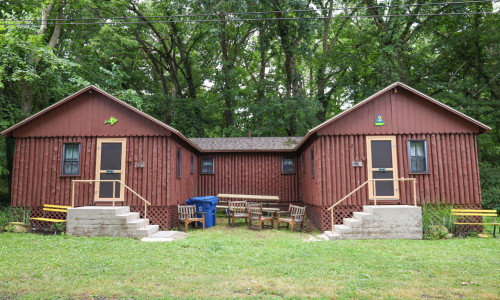Staff Blogger: Loretta Wilken, Lakeside Chautauqua Master Gardener/Groundskeeper
If you’ve recently strolled along the west end of Second Street in Lakeside, you’ve undoubtedly noticed the explosion of yellow blooms against a shiny  dark green carpet. You may have also noticed that they have traveled across the road and are even popping up outside of the fence. These plants are Lesser Celandine, Ranunculus ficaria. They’re a visual feast for the eyes, but this buttercup family member comes with a definite word of caution.
dark green carpet. You may have also noticed that they have traveled across the road and are even popping up outside of the fence. These plants are Lesser Celandine, Ranunculus ficaria. They’re a visual feast for the eyes, but this buttercup family member comes with a definite word of caution.
Lesser celandine is a spring ephemeral that produces short lived blooms early in the year and can completely disappear in late spring, early summer. It is a non-native plant introduced to North America in the mid 1800s. It is considered an invasive plant by the Ohio Department of Agriculture and cannot be sold or distributed in Ohio.
The plants have somewhat heart shaped, dark green leaves with yellow blossoms about 1” wide with 7-12 petals. Underground tubers store the energy produced by the leaves in spring for the following year’s growth. You will see at the base of the foliage small football shaped bulbils. These grow new plants and are easily transported by foot traffic. The plants form a tight mat of foliage 4” to 5” tall that chokes out native spring ephemerals such as trillium, mayapples, Dutchman’s breeches and Virginia spring beauties.
Eliminate this pest by digging out and destroying plants. Residual tubers are pretty tenacious. It may take several seasons work. Do not move soil from one bed to another. Multiple herbicidal applications can also be used.
At a glance, lesser celandine could be confused with a native plant, Marsh Marigold, Caltha palustris. This plant has no underground tubers or bulbils, the leaves are larger, fewer flower petals and grows in marshy wet areas.
So as a warning, please never transplant lesser celandine to another location, especially a wild or woodland area. Be a good neighbor and do not share them. Dug out plants should be bagged for trash disposal. Do not add them to your compost pile.




